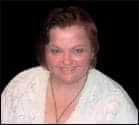Tinnitus | August 2007 Hearing Review
The need for helping people who have tinnitus is enormous, and our capacity to meet their needs is still finite.


|
| Jay B. McSpaden, PhD, BC-HIS, is an audiologist, who retired from private practice and currently works as a hearing instrument specialist in Jefferson, Ore. Dana K. McSpaden, MS, is an audiologist and speech-language pathologist who, like her father, often teaches courses for dispensing professionals. |
Tinnitus is a common auditory system problem defined as “the sensation of sound without external stimulation,” or “the conscious experience of sound that originates in the head.” After “I don’t think my hearing is the same as other people’s hearing,” the statement “My ears ring” is probably the most common hearing-related complaint that hearing care professionals encounter.
We know that there are several kinds of tinnitus. For this article, we will be focusing on two common forms: 1) Subjective tinnitus, which is a sound that is heard only by the individual, and 2) Objective tinnitus, which is an actual sound that may be heard outside the body and/or measured. Likewise, tinnitus is often classified as an “ear noise,” called tinnitus aurium, or a “head noise,” called tinnitus cerebri. Similarly, we use “peripheral tinnitus” to denote localization to one or both ears or tinnitus originating outside of the central auditory system, while “central tinnitus” is used to denote hard-to-pinpoint sounds (ie, heard all over the head) or tinnitus from within the central auditory system.
According to the National Institutes of Health (NIH), 28 million Americans—or close to 10%—have hearing loss in one or both of their ears. It is estimated that approximately 17% to 20% of the world’s population has some type of tinnitus. About 85% of people with tinnitus have some form of hearing loss, as well, so there is a large overlap in hearing loss and tinnitus populations. The American Tinnitus Association (ATA) estimates that 12 million Americans have tinnitus, and at least 1 million have it so badly that it affects their daily activities.
There also appear to be stages, or levels, in the development of many types of tinnitus. These stages involve changes in auditory system processing at, or from, the periphery. They tend to progress from an infrequent sound to one that is continuous. The sound often becomes louder, more persistent, or more noticeable over time.
Possible Origins of Tinnitus
The etiology of tinnitus is not well known. It should be remembered that tinnitus is a symptom, not a disease. Although most forms of tinnitus are associated with damage to the auditory system, tinnitus can be related to almost any kind of ear disease or trauma involving the head that results in the “sensation of sound.” It has also been associated with noise exposure; extreme stress or trauma; degeneration of the bones of the middle ear; injury to the ears, head, or neck; infections in the ears or sinuses; wax or any foreign object in the ear canal; Meniere’s disease; heart disease; thyroid disease; exposure to ototoxins (including chemotherapy), and/or the use of some prescription and nonprescription drugs, to list only a few.
Many kinds of central auditory processing disorders (CAPD) or auditory neuropathy/dyssynchrony along the auditory pathway may be perceived as tinnitus. Therefore, just as hearing loss and decreased speech perception capabilities can be attributed to any number or combination of central and peripheral problems, tinnitus can have a vast variety of causes.
Tinnitus may even involve spontaneous activity in the peripheral cells themselves. Abnormal spontaneous activity may produce this perception, but it requires central auditory system activity to maintain and perpetuate it. There are several potential “generators” of the signal, including:
- Discordant damage to the outer (OHC) and inner hair cells (IHC);
- Disturbances of the efferent auditory system;
- “Cross-talk” among the auditory system fibers;
- Ionic imbalance in the cochlea;
- Dysfunction of the cochlear neurotransmitters and others; and
- Certain types of tumors.
Mechanisms of tinnitus can involve:
- Induction or generation of a signal in the peripheral auditory system that results in an imbalance in the central auditory system, as well as in the central nonauditory system;
- Detection by the brain of a change in activity; and
- The perception or evaluation of the tinnitus as undesirable, a threat, competing noise, etc, by the central auditory system and the emotional centers of the brain.
Auditory neural plasticity, the way in which sound is transmitted and processed, occurs as a result of new learning or relearning secondary to sensory or simple auditory deprivation/stimulation. It is due to physiological or anatomic changes in the brain during development, deprivation, or sensory experience. The auditory, limbic, and autonomic nervous systems are involved in the processing of and the reacting to tinnitus.
The dorsal cochlear nucleus (DCN)—which connects the non-auditory portion of the brain to the auditory system—is active when tinnitus is present. The DCN is anatomically complex and has been implicated in everything from sound localization to a possible reduction in the ability to curb certain neural activity from entering the system as noise. The DCN may also be involved in emotional processes, which may be one explanation for why anxiety and depression often accompany tinnitus. Likewise, this area has been associated with “somatically modulated tinnitus,” whereby patients might clench their teeth or move their necks and note a change in tinnitus sensation.
Structural changes in the amygdala and the nucleus accumbens may also contribute to the emotional effects of tinnitus, as well as difficulties in sleep and selective attention. It is thought that auditory information ascends to the brain in two parallel pathways, and the “non-traditional pathway” bypasses the primary cortex and has strong/direct connections to the amygdala in the limbic system.
Tinnitus and chronic pain. “Pain” is described as an unpleasant sensory or emotional experience associated with actual or potential tissue damage. In this previous sentence, one could substitute “tinnitus” for “pain” and the statement would remain true. The monotonic relationship between “chronic intractable pain” (or “phantom pain” in an amputee) and “peripheral tonal tinnitus” is based upon the identity of the neural pathways involved and the experience of “pain” itself, as well as how the brain codes itself. In simple terms, continuous unremitting tinnitus may be the auditory system’s analog of chronic intractable pain. In this case, the stimuli proceeds along the afferent auditory system (or are unblocked by the efferent neurons) rather than along those of the somatosensory pathways.
As with pain, tinnitus can be “scaled.” We require our patients to scale the loudness of their tinnitus from 1 (“Sometimes I hear a little ‘peep'”) to 10 (“I can’t stand it another minute”). On this scale, most patients who tell you that their tinnitus is above “5” may wish to wear a hearing instrument, if only to interfere with their tinnitus (regardless of their hearing loss). Usually, a “6” on this scale is a severe problem, a “7” is almost excruciating, and an “8” can make the patient potentially suicidal. Obviously, in more extreme cases, tinnitus treatment requires a comprehensive multiprofessional approach, and referral is indicated.
Associated symptoms. There are many associated symptoms with tinnitus:
- Frequent mood swings
- Depression and anxiety
- Anger and irritability
- Tension and frustration
- Sleep disturbances
- Poor concentration
Coincident complaints can include:
- TMJ symptoms
- Headache and hyperacusis
- Muscle spasms
Other complaints may also be related to tinnitus. For example, the incidence of headaches and tinnitus/hyperacusis are extremely high. In some women, the incidence and exacerbation of their tinnitus may be strongly related to their menstrual cycle and the frequency of severe (or migraine) headaches.
Tinnitus cerebri may have its etiology in disease and associated fever, but far more frequently, this type of tinnitus has its beginnings in trauma or “closed-head injury.” In the absence of head trauma, tinnitus is not common in prepuberty, but seems facilitated by the hormone flood of that event. There is some evidence that long-term type II diabetes mellitus may exacerbate peripheral, tonal, tinnitus aurium into becoming tinnitus cerebri as well.
Rarer manifestations. Objective tinnitus is a sound typically generated in the middle ear (or cochlea) that can be heard and/or measured by an observer. Among the most common of these is a “clicking” sound in the middle ear (like the snap of the fingers) that is actually caused by a disorder called palatal myoclonus—the “popping open” of the eustachean tube sphincter muscle in the nasopharyngeal wall of the mouth/nose. The sound of the patient’s heartbeat and/or pulse is also quite common. Generally, this originates from a blood vessel situated on top of the eardrum’s inner surface, or a blood vessel in the middle ear that can be heard within the “hollowness” of the “closed” middle-ear cavity. Another possible cause of objective tinnitus is the spontaneous otoacoustic emissions (OAE) of the outer rows of OHCs.
The loudness of the tinnitus does not necessarily correlate with its severity or its “degree of annoyance.” The only valid measure of tinnitus is the patient’s subjective report (see McKenna and Andersson in this issue of HR).
Why Is Tinnitus So Problematic?
- Tinnitus is a symptom, not a disease;
- A lack of experimental data and evidence-based treatments exist;
- The mechanisms are not well understood;
- It may be strongly imprinted in the CNS;
- There may be powerful connections with emotional states;
- There is no known cure, though there are several treatments and treatment pathways that can help;
- We rarely know, in any given patient, whether tinnitus is due to 1) “something that happened that wasn’t supposed to happen,” or 2) “something that didn’t happen that was supposed to happen.”
The scope of the problem is immense. There are approximately 15,000 dispensing offices in the United States, and there are some 12 million people with tinnitus, of whom about 10% could benefit from dedicated professional help. This group overlaps substantially with the 30 million people who have significant hearing loss. Any way that you do the math, most dispensing offices cannot hope to meet the needs of this special group completely, at least not with our emphasis (and business solvency) based on addressing hearing loss through amplification. In short, this area should provide fertile ground for future professional specialization.
However, acknowledging the numbers problem, hearing care professionals are still on the front lines of tinnitus patient care. As mentioned, a multidisciplinary approach is warranted. Diagnosis of tinnitus may include hearing testing, x-rays of the head, angiography, MRI or CT scans of the head, blood work, etc.
Likewise, treatments for tinnitus—ranging from good evidence-based treatments to home remedies—include acupuncture, homeopathy, ultrasound, electromagnetic stimulation, ear canal magnets, low-power laser therapy, hypnotherapy, meditation, Teflon insertions between the cochlea and the vascular loop, repetitive transcranial magnetic stimulation, vibrational therapy, direct current electrical stimulation, and high-frequency enriched sound environments. Also used are antidepressant medications like Zoloft, Paxil, and Xanax; other medications including Neurontin, vitamins, and minerals; and herbs such as gingko biloba, black cohosh, and cornus.
Popular in the dispensing field has been the use of body-worn or environmental maskers, white-noise generators, amplification and multichannel digital hearing aids, and counseling for habituation. Different approaches in audiology have seemingly pitted the more popular Tinnitus Retraining Therapy (TRT), which stems from Jastreboff’s Neurophysiological Model, against the Habituation/Psychological Model which, as its name suggests, relies more on psychology and two-way counseling for the remediation of persistent tinnitus. Both a TRT approach and the psychological approach appear to work—at least to some degree for certain individuals. This shouldn’t be shocking, considering that tinnitus appears to be constituted by both neurophysiological and psychological elements.
Taking a case history, performing diagnostics, and guiding patients’ reactions to their hearing loss and tinnitus through appropriate counseling are important functions for dispensing professionals, as are referring patients and supporting their (and their families’) efforts to overcome hearing-related challenges.
Hearing Testing and Amplification
Optimizing a person’s hearing with a hearing aid is easily one of the best ways to help people who have tinnitus. Good hearing aid fittings have been shown to be an essential element in tinnitus therapy. In particular, hearing aids with low-compression kneepoints have been found to be helpful because they elevate the low-intensity environmental sounds without making those sounds painful to the listener.
Case history. For the tinnitus patient, the first thing we need to do is to take a case history. As the patient reports his/her history and we learn about their hearing, it is helpful to ask if the loudness or pitch of the tinnitus changes. Does it keep him/her awake at night? People normally sleep in roughly 90-minute cycles. At the end of each, the normal pattern is to come “up near the surface” of wakefulness, but then descend again into another cycle. Some tinnitus patients’ cycles, however, are frequently broken, as if someone is constantly rousing them. They can often tell you the pattern of nocturnal clock readings. They do not get 6 to 8 hours of continuous sleep; instead, they get 4 to 6 “serial naps.” Over the long term, the “subclinical sleep deprivation” can contribute to anxiety and even mild psychosis, as well as other aberrant behaviors. These can include irritability, emotional lability, hypertension, and an inability to concentrate. Their lack of rest can also heighten their anxiety and perception of loudness regarding the tinnitus. It can also cause hyperacusis, or alternatively, cause them always to seek background noise as a masker. In short, tinnitus can set off a vicious cycle of negative behavior.
The case history should also include questions about medications, aware that only a few drugs have helpful effects, while a number of them can cause or exacerbate the problem. We ask for the perceived location of the tinnitus. Subjective tinnitus, the most common type, is usually perceived to be a “tone” (ie, it has a pitch) as opposed to a “noise” (without pitch), and is also usually perceived to be “in the ear” as opposed to “in the head.” Subjective tinnitus is the kind most amenable to treatment by masking with hearing aids or other masking devices.
When we ask if the tinnitus is a tone or a noise, it is also useful to know if it has a constant or variable pitch, or if it chirps like a cricket. A cricket-like sound is actually two tones of tinnitus, so close to the same frequency that the beats are a function of the Hz separating the tones, or the “difference tone.”
Using hearing aids as maskers. Audiologic patterns in tinnitus patients are fairly common. There is a high prevalence of cochlear pathology; there is the absence of a relationship between the degree of the loss and the severity of the tinnitus; and OAEs often show outer hair cell (OHC) dysfunction in virtually all cases of tinnitus.
There are currently several audiometers that have the capability of tinnitus matching testing at interoctave frequencies. These audiometers test at octaves, half-octaves, and in interfrequencies (typically 25-Hz increments) from 100 Hz to 10,000 Hz, as well as from 10 kHz to 20 kHz (typically in 100-Hz increments). In fact, as broadband responses in hearing instruments become more common (ie, amplification to and above 8,000 Hz), one positive side-effect should be the ability to assess and mask tinnitus more effectively.
If possible, we can try creating the “matching tone” to the tinnitus. Then we measure or calculate the patient’s hearing threshold at that point. We learn about the pitch, loudness, and duration of the tinnitus. As we measure it and construct its analog, we can see if we can generate a “residual inhibition” of the tinnitus with aspects of the sound, or narrowband noise (NBN), around it.
We can measure thresholds at octave and half-octave frequencies. We then have the patient identify the half-octaves above and below the tinnitus frequency. If possible, we bracket smaller and smaller increments until the sound is identified and matched. At the closest half-octave, we increase the loudness above threshold (blind) until the number of dBSL of the tinnitus tone is identified (matched). Then, we measure the dynamic range at 250 Hz, and again at the center frequency of the patient’s tinnitus. Since a single brain is making both judgments, they should represent identical points on the loudness scale.
The ratio of the two dynamic range measurements is the number of dB per dB that the patient recruits at the tinnitus frequency. Multiply that number by the number of dBHL of the sound and you will know how loud (in dBSL) the tinnitus is to the patient. As a demonstration for the patient’s partner, we play that sound for them (ie, loud as the patient hears it). It’s often an eye-opener.
-
- In the August 2006 HR, Luca Del Bo, MSc, and colleagues found that sound stimulation delivered by open-fitting hearing instruments, combined with Tinnitus Retraining Therapy (TRT), was able to provide successful results within relatively short period of time (average: 6.9 months). For more information, visit our Online Archives.
We also demonstrate for patients the effect of masking on their tinnitus, which can often be accomplished with their own hearing instruments. This ability is dependent upon the circuitry in the hearing aid, but the technology is certainly available for most people and through numerous hearing aid manufacturers. The frequency response of the instrument must cover the center frequency of the patient’s tinnitus, but this is a fairly common occurrence.
If we are able to mask the tinnitus sound or achieve residual inhibition with the output of a hearing aid, the patient often feels assured that at least some help is available to them. When helpful, we can disable the microphone noise suppression circuit or disable the expansion. This allows the noise floor of the microphone to act as the broadband noise masker. Devices with three or more channels are well suited for this.
The need for helping people who have tinnitus is enormous, and our capacity to meet their needs is finite. For years, dispensing professionals have more or less stumbled around when trying to help tinnitus patients. We know too little about what causes tinnitus, and we know too little about how to make it stop completely. Given this situation, we should know how to properly mask tinnitus and how to reduce some of its insidious effects. Likewise, we should know enough about tinnitus to refer people who suffer from it, when appropriate. The fact that we do not yet know all the answers is not a reason to stop asking those questions that can be helpful.
Correspondence can be addressed to HR or Jay B. McSpaden, PhD, PO Box 1043, Jefferson, OR 97352; email:[email protected].
Citation for this article: McSpaden JB, McSpaden D. A brief overview of tinnitus for dispensing professionals. Hearing Review. 2007;14(9):24-28.
Editor’s Update: As this has proven to be a fairly popular article in our digital archives, we advise readers to view updates on the subject by typing “tinnitus” into our search engine at the top of the page. It should also be noted that, since publishing this article, the AAO-HNS has published clinical practice guidelines on tinnitus treatments which includes recommendations for and against several drugs and/or treatment methods.






